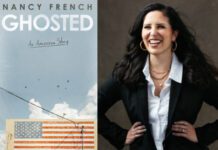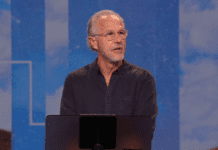Creative Solutions to Saving Churches
With its downsizing, Jacksonville’s First Baptist Church says it hopes to become a “better neighbor.” That’s a common refrain from many churches who are innovating to survive.
In his Atlantic article, Merritt spotlights an approach that might stem—and even reverse—America’s tide of dying churches. Missional Wisdom Foundation (MWF), a non-profit based in Southlake, Texas, experiments with “alternative forms of Christian community.”
Larry Duggins, who worked in finance before becoming a pastor, teamed with evangelism professor Elaine Heath to form MWF, which finds creative ways to keep churches afloat and off the auction block. Various news outlets have featured their “makeovers,” which provide win-win solutions for congregations and the surrounding neighborhoods.
At White Rock United Methodist Church in Dallas, which had much more space than it could fill or use, MWF converted some spaces into co-working offices, art workshops, classrooms for refugees, and even a community dance studio. With a mission of “Live local, worship local, serve local,” White Rock now focuses on “meeting, collaborating, and serving with our neighbors.”
By renting out some space and opening its doors wider, the church is not only financially sound but earning some revenue. “The walls of the church are porous now,” says Pastor Mitchell Boone, “so we have this kind of free-flowing groups of folks that come in and out of the church.” He adds, “I think it just reminds us that hope emerges in unexpected places.”
Bethesda United Methodist Church in Asheville, North Carolina, had declined to just 10 worshipers per week. But that has increased more than five-fold, largely thanks to a new community center. MWF helped Bethesda create the Haw Creek Commons, which features co-working areas, workshops, meeting rooms, a commercial kitchen, retreat space, a garden and greenhouse, and even beehives. The space has become “a container” for creating community, which is built, the church says, “around our work, our passions and recreation, our food, and our family.”
The goal, Duggins tells Merritt, was to “draw people who might not otherwise come,” and the Commons dispels “stereotypes of what the church is.” When a sacred space is welcoming to diverse groups, Bethesda is discovering, people who might never have stepped foot inside a church are more likely to seek help when needed.
MWF, which arranges profit-sharing with churches it helps, offers resources for congregations needing new life. “Years ago, the neighborhood church was the place many in America got together and, along with local schools, was where they got to know their neighbors,” Duggins says. “But this model is no longer relevant for many people, so churches have to think creatively about how to help people encounter others and God in their everyday lives.”











